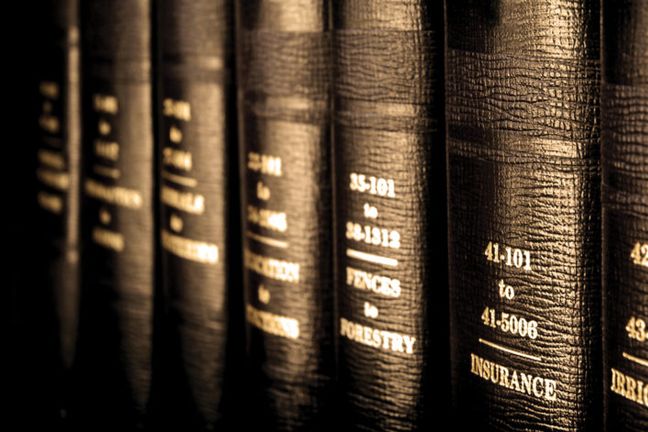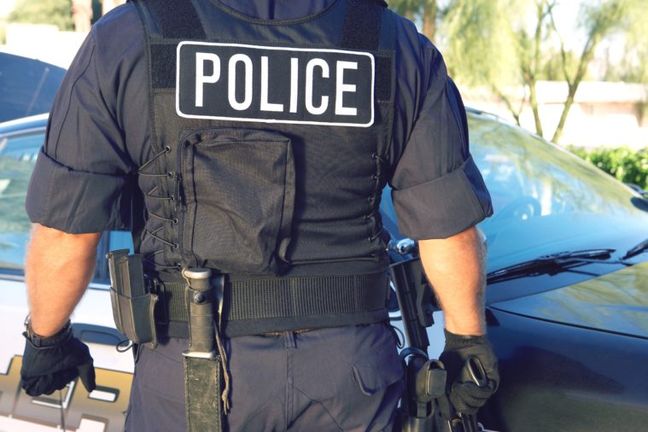Monster Energy Co. v. Schechter, 2019 WL 3022773
Facts
A 14-year-old girl went into cardiac arrest and died after consuming two energy beverages. The minor girl’s parents, Wendy Crossland and Richard Fournier, filed a wrongful death and products liability lawsuit against the beverage manufacturer, Monster Energy Company (“Monster”). The parties settled prior to trial. Not long after settlement, plaintiffs’ attorney spoke with a journalist about the settlement. The journalist quoted the attorney on the information the attorney disclosed in an article which the journalist posted on the internet. When Monster learned of the article it filed a lawsuit against plaintiffs’ attorney for violating the terms of the confidentiality clause in the settlement agreement. The Complaint advances the following causes of action: breach of contract; breach of the implied covenant of good faith; unjust enrichment; and promissory estoppel.
Key to this lawsuit is certain language in the underlying settlement agreement. First, the settlement agreement contains a confidentiality clause with the following language:
The Parties understand and acknowledge that all of the terms, conditions and details of this Settlement Agreement including its existence are to remain confidential. Plaintiffs and their counsel agree that they will keep completely confidential all of the terms and contents of this Settlement Agreement, and the negotiations leading thereto, and will not publicize or disclose the amounts, conditions, terms, or contents of this Settlement Agreement in any manner….Specifically, and without limitation, Plaintiffs and their counsel of record, individually and on behalf of themselves and their principals, partners, agents, attorneys, servants, representatives, parents, spouse, dependents, issue, heirs, insurers, predecessors, successors-in-interest and assigns agree and covenant, absolutely and without limitation, to not publicly disclose to any person or entity, including, but not limited to, newspapers, magazines, television, fliers, documentaries, brochures, Lawyers & Settlements, VerdictSearch (or the like), billboards, radio, newsletters, and/or the Internet” certain facts related to the settlement …. In regard to any communication concerning the settlement of this Action, the Parties and their attorneys and each of them hereby agree that neither shall make any statement about the Action, each other party or Defendants’ products in relation to this Action, in the media, including but not limited to print, television, radio or Internet, . . . [and any comment] shall be limited to the following, or words to their effect: ‘This matter has been resolved.’
(Emphasis added.) (Id. at 1.)
Second, the settlement agreement provides it is made:
[O]n the behalf of the settling Parties, individually, as well as on the behalf of their, without limitation, respective beneficiaries, trustees, principals, attorneys, officers, directors, shareholders, employers, employees, parent company(ies), affiliated company(ies), subcontractors, members, partners, subsidiaries, insurers, predecessors, successors-in-interest, and assigns.”
(Emphasis added.) (Id. at 1.)
Third, counsel for both parties signed the settlement agreement under a heading “APPROVED AS TO FORM AND CONTENT.” Counsel were not otherwise signatories to the agreement.
Plaintiffs’ attorney responded to Monster’s Complaint by filing a special motion to strike pursuant to Code of Civil Procedure section 425.16 (“anti-SLAPP motion”). In the anti-SLAPP motion plaintiffs’ counsel contends the lawsuit implicates counsel’s right to free speech. The trial court granted the anti-SLAPP motion with regard to all causes of action except breach of contract, indicating (a) the language of the settlement agreement “clearly contemplates counsel as being subject to the agreement,” and (b) plaintiff’s counsel signed the settlement agreement. (Id. at 2.)
The Court of Appeal reversed the trial court’s ruling with regard to the breach of contract claim, finding counsel’s signature to the settlement agreement concerning form and content did not bind counsel to the terms of the agreement. A petition for writ of certiorari to the California Supreme Court followed.
Holding
Reversed. Depending on the content of the settlement agreement as a whole, an attorney’s signature bearing approval of form and content could demonstrate the attorney’s intent to be bound by the terms of the agreement. Monster’s Complaint otherwise survives the anti-SLAPP motion concerning the breach of contract claim because Monster demonstrated its claim possesses merit sufficient to avoid dismissal.
Takeaway
Takeaway No. 1: “Approved as to Form and Content” signature blocks are not necessary. Furthermore, as demonstrated in this case, such signature blocks can create confusion about what the attorneys are actually signing off on. It goes without saying a settlement agreement between parties represented by legal counsel should necessarily be drafted by their legal counsel. If an attorney does not agree to the form and content of a settlement agreement he or she is creating in combination with opposing counsel, the attorney should not be asking the client to sign the document. It is that simple.
Takeaway No. 2: The vast majority of settlement agreements contain a confidentiality provision. Do not talk about settlement agreements including confidentiality provisions with anyone other than (a) your insured, (b) your insured’s legal counsel and staff, or (c) other staff members with whom you are communicating concerning the lawsuit or pre-litigation claim at issue in the settlement agreement.
Quigley v. Garden Valley Fire Protection Dist., 2019 WL 3071308
Facts
Two fire protection districts managed a base camp for firefighters battling the 2009 Plumas National Forest wildfire known as the “Silver Fire.” The base camp provided a designated area for firefighters to rest in between shifts. Rebecca Megan Quigley (“plaintiff”), a United States Forest Service firefighter, was one of many who assisted in the firefighting response. A water truck accidently ran her over at base camp while she was sleeping in the designated rest area. Plaintiff sustained serious injuries from this incident. She later sued the two fire protection districts and several of their employees for the tort claims of negligence, dangerous condition of public property, and failure to warn.
Defendants responded to plaintiff’s Complaint with an Answer advancing thirty-eight affirmative defenses. Nearly one-third of defendants’ affirmative defenses cite individual statutory sections of California’s Government Claims Act, Government Code section 810, et seq. (the “Act”). Generally speaking, the Act immunizes public entities and their employees from tort liability unless specifically authorized by the Act.
Defendants’ affirmative defenses cite seventeen individual sections of the Act. Of note, the affirmative defenses do not explicitly cite section 850.4 of the Act, which provides: “Neither a public entity, nor a public employee acting in the scope of his employment, is liable for any injury resulting from the condition of fire protection or firefighting equipment or facilities or, except as provided in Article 1 . . . for any injury caused in fighting fires.” Notwithstanding, one of defendants’ affirmative defenses contains a catchall reference the Act as a whole.
Come the time of trial, defendants filed a motion for nonsuit at the close of plaintiff’s opening statement. The basis for this motion? Defendants claimed they were immune from plaintiff’s lawsuit under section 850.4 of the Act. The problem? This was the first time defendants explicitly raised section 850.4 as a defense to plaintiff’s claims. Consequently, plaintiff objected to defendants invoking section 850.4, arguing defendants waived the right to invoke such defense because they did not raise it in their Answer. The trial court disagreed with plaintiff, finding it was impossible for defendants to waive governmental immunity under section 850.4 of the Act. More specifically, the trial court concluded governmental immunity is jurisdictional and cannot be waived because it is jurisdictional in nature.
Defendants prevailed on their motion for nonsuit. Thereafter, plaintiff filed a motion for a new trial on the basis that defendants waived their right to invoke section 850.4 as a defense to plaintiff’s claims by not asserting this defense in their Answer. The trial court denied the motion, this time avoiding is prior jurisdiction reasoning all together. Instead, the trial court reasoned defendants’ general reference to the Act as a whole sufficiently captured an affirmative pursuant to section 850.4. Plaintiff appealed.
Plaintiff’s argument regarding defendants’ defense waiver fared no better before the Court of Appeal. The Court of Appeal agreed with the trial court’s determination defendants’ right to assert immunity under section 850.4 could not be waived because it is jurisdictional in nature. The Court of Appeal did not address whether it otherwise felt defendants’ answer adequately pleaded an affirmative defense pursuant to section 850.4. Plaintiff ultimately filed a petition for a writ of certiorari with the California Supreme Court.
Ruling
Reversed and remanded for further proceedings. Immunity under section 850.4 of the Act is not jurisdictional in nature. A defendant must plead section 850.4 as an affirmative defense in his/her Answer, otherwise the defendant waives this defense.
Takeaway
If you are going to assert statutory law as a basis for an affirmative defense, cite each and every statutory section with specificity. Do not give plaintiffs grounds to challenge the sufficiency of affirmative defenses containing general references to a large group of statutory provisions. As demonstrated in this case, “catchall” general references to an entire legislative act can be problematic.
Nodal v. Cal-West Rain, Inc., 2019 WL 3213856
Facts
Imagine spending more than one month of your life in trial just to find out you have to do it all over again because of juror misconduct. This is exactly what happened in Nodal v. Cal-West Rain, Inc. Beware of the rogue juror.
Vineyard foreman Ruben Nodal (“plaintiff”) sustained considerable injury from being struck in the head by a valve assembly. This incident occurred when the valve assembly dislodged from the irrigation system to which it was connected. Plaintiff sued Cal-West Rain, Inc. (“Cal-West”), who designed and installed the subject irrigation system, alleging improper installation. Trial spanned five weeks. Come the time of jury deliberations, one of the jurors (a pipe fitter by trade who designed an built an irrigation system for his almond ranch) relayed his own “expert” opinion to fellow jurors on: (a) what the industry standard requires for the installation of irrigation system, (b) the time in which liability for irrigation system-related problems transfers to the vineyard owner, and (c) his belief Cal-West installed the subject irrigation system “the way the AG [i.e., agricultural] industry does it, that’s just how it’s done.” (Id. at 2.) The jury entered judgment for Cal-West. Plaintiff filed a motion for new trial due to juror misconduct, as well as a judgment notwithstanding the verdict. The trial court determined juror misconduct did in fact take place, but denied the motion to for a new trial because the juror misconduct did not prejudice plaintiff. The trial court also denied plaintiff’s motion for judgment notwithstanding the verdict on the basis there was substantial evidence to support the verdict. Plaintiff appealed.
Ruling
Reversed and remanded for a new trial. Jurors are prohibited from “inject[ing] extraneous evidence, standards of care, or defense theories into the deliberations.” (Id.) The juror misconduct at issue created a presumption of prejudice, which Cal-West did not rebut. The presumption of prejudice supports a finding of improper juror influence.
Takeaway
Consider drafting a special jury instruction reminding all jurors they are precluded from providing the other jurors with extraneous evidence, as well as their personal take on standard of care and defense/prosecution theories, regardless of their professional or personal experience, education, or training. Additionally, during voir dire, thoroughly vet juror candidates with strong personalities who could be prone to imposing their ideas on others.

 Author: Emily Straub
Author: Emily Straub
 Cannabis Workers Allege Quota to Trim 4 Pounds a Day Violates the California Labor Code
Cannabis Workers Allege Quota to Trim 4 Pounds a Day Violates the California Labor Code
 The Ninth Circuit Reminds Us: Every Word Matters
The Ninth Circuit Reminds Us: Every Word Matters
 NO WAY, PRO SE! The Consequences of Abusing the Judicial System as a Pro Se Litigant in Colorado
NO WAY, PRO SE! The Consequences of Abusing the Judicial System as a Pro Se Litigant in Colorado
 Victim of Financial Mismanagement or Unlawful Retaliation? New Jersey City University Program Founder Claims School Retaliated After Reporting Alleged Sexual Harassment
Victim of Financial Mismanagement or Unlawful Retaliation? New Jersey City University Program Founder Claims School Retaliated After Reporting Alleged Sexual Harassment
 “Real Housewives” Gets a Reality Check
“Real Housewives” Gets a Reality Check
 Missing a Chapter: Insufficiency of Expert Deposition Testimony in Medical Malpractice Litigation
Missing a Chapter: Insufficiency of Expert Deposition Testimony in Medical Malpractice Litigation
 Crash Course: Why Summary Judgment Misses the Mark in Illinois Multi-Cause Limousine Crash Collision
Crash Course: Why Summary Judgment Misses the Mark in Illinois Multi-Cause Limousine Crash Collision
 Bitter Truths: Lead, Cadmium, and Defective Pleadings in California Chocolate Class Action
Bitter Truths: Lead, Cadmium, and Defective Pleadings in California Chocolate Class Action
 The Law of Unintended Consequences: Including Insurance Brokers in Litigation Strategy Communication May Waive the Attorney-Client Privilege
The Law of Unintended Consequences: Including Insurance Brokers in Litigation Strategy Communication May Waive the Attorney-Client Privilege
 Telemedicine: An Invaluable Weapon During the COVID-19 Crisis
Telemedicine: An Invaluable Weapon During the COVID-19 Crisis
 Physician Burnout: An Ongoing Crisis Increasing the Risk of Medical Malpractice Claims
Physician Burnout: An Ongoing Crisis Increasing the Risk of Medical Malpractice Claims
 New York Case Law Update
New York Case Law Update
 New Law Affecting the Scope of Confidential Settlement Agreements in Nevada
New Law Affecting the Scope of Confidential Settlement Agreements in Nevada
 Work Product Protection for Third Parties via Personal Injury Protection Insurance
Work Product Protection for Third Parties via Personal Injury Protection Insurance
 Colorado Case Law Updates
Colorado Case Law Updates
 The Scope of Legal Malpractice Damages
The Scope of Legal Malpractice Damages